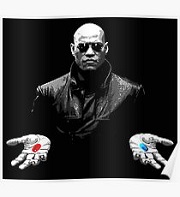Excess of Immune Cells Found in Brains of People w
Post# of 158065

https://www.the-scientist.com/notebook/excess...tism-66917
An accumulation of T cells and astrocytes in postmortem brain tissue hints at possible autoimmune origins for many cases of autism
About four years ago, pathologist Matthew Anderson was examining slices of postmortem brain tissue from an individual with autism under a microscope when he noticed something extremely odd: T cells swarming around a narrow space between blood vessels and neural tissue. The cells were somehow getting through the blood-brain barrier, a wall of cells that separates circulating blood from extracellular fluid, neurons, and other cell types in the central nervous system, explains Anderson, who works at Beth Israel Deaconess Medical Center in Boston. “I just have seen so many brains that I know that this is not normal.”
He soon identified more T-cell swarms, called lymphocytic cuffs, in a few other postmortem brains of people who had been diagnosed with autism. Not long after that, he started to detect another oddity in the brain tissue—tiny bubbles, or blebs. “I’d never seen them in any other brain tissue that I’ve looked at for many, many different diseases,” he says. Anderson began to wonder whether the neurological features he was observing were specific to autism.
To test the idea, he and his colleagues examined postmortem brain tissue samples from 25 people with autism spectrum disorder (ASD) and 30 developmentally normal controls. While the lymphocytic cuffs only sporadically turned up in the brains of neurotypical individuals, the cuffs were abundant in a majority of the brains from individuals who had had ASD. Those same samples also had blebs that appeared in the same spots as the cuffs. Staining the brain tissue revealed that the cuffs were filled with an array of different types of T cells, while the blebs contained fragments of astrocytes, non-neuronal cells that support the physical structure of the brain and help to maintain the blood-brain barrier.
Reading the literature and drawing on his experience as a pathologist, Anderson started to think about blebs and what they do when they show up in tissues beyond the brain. For example, in cancer, “blebs are generated when T cells attack a tumor cell,” he explains. “The tumor cells will spit out surface membrane pieces . . . as a way to protect [themselves] from the attack, but also possibly to deliver signals to other cells around them.” In the brain samples from individuals with ASD, the blebs visually resembled blebs created in response to tumors. The brain blebs may be formed in response to the infiltration of T cells into the space between blood vessels and neural tissue, Anderson suggests, while the cell fragments they contain could come from the astrocytes that make up the glia limitans—the final wall of defense separating neural tissue from foreign and toxic substances circulating in the blood.
Lymphocytic cuffs, meanwhile, are common in diseases such as skeletal muscle polymyositis, a type of chronic muscle inflammation. That disease has many traits of autoimmune disorders, in which the body perceives and attacks parts of itself as foreign, and it’s a disease that Anderson had often seen in biopsies. “I’ve seen many [cuffs] under the microscope,” he says. “So I know what a T-lymphocyte attack of an organ looks like.” The cuffs also show up in response to toxins, or antigens given off by a virus, and cause brain inflammation.
The finding of both cuffs and blebs in the postmortem brains of autistic people suggests that the individuals’ T cells were also responding to some antigen—either a molecule considered foreign even though it’s created by the person’s own body, or a viral or bacterial one encountered in utero, Anderson says. Except for rare cases in which an autism-linked genetic mutation can be identified, the cause of ASD is unknown. According to the new data, a majority of the unexplained cases could have arisen as an autoimmune disorder or an inflammatory condition triggered during pregnancy, Anderson and colleagues concluded in a recent paper.
 (3)
(3) (0)
(0)